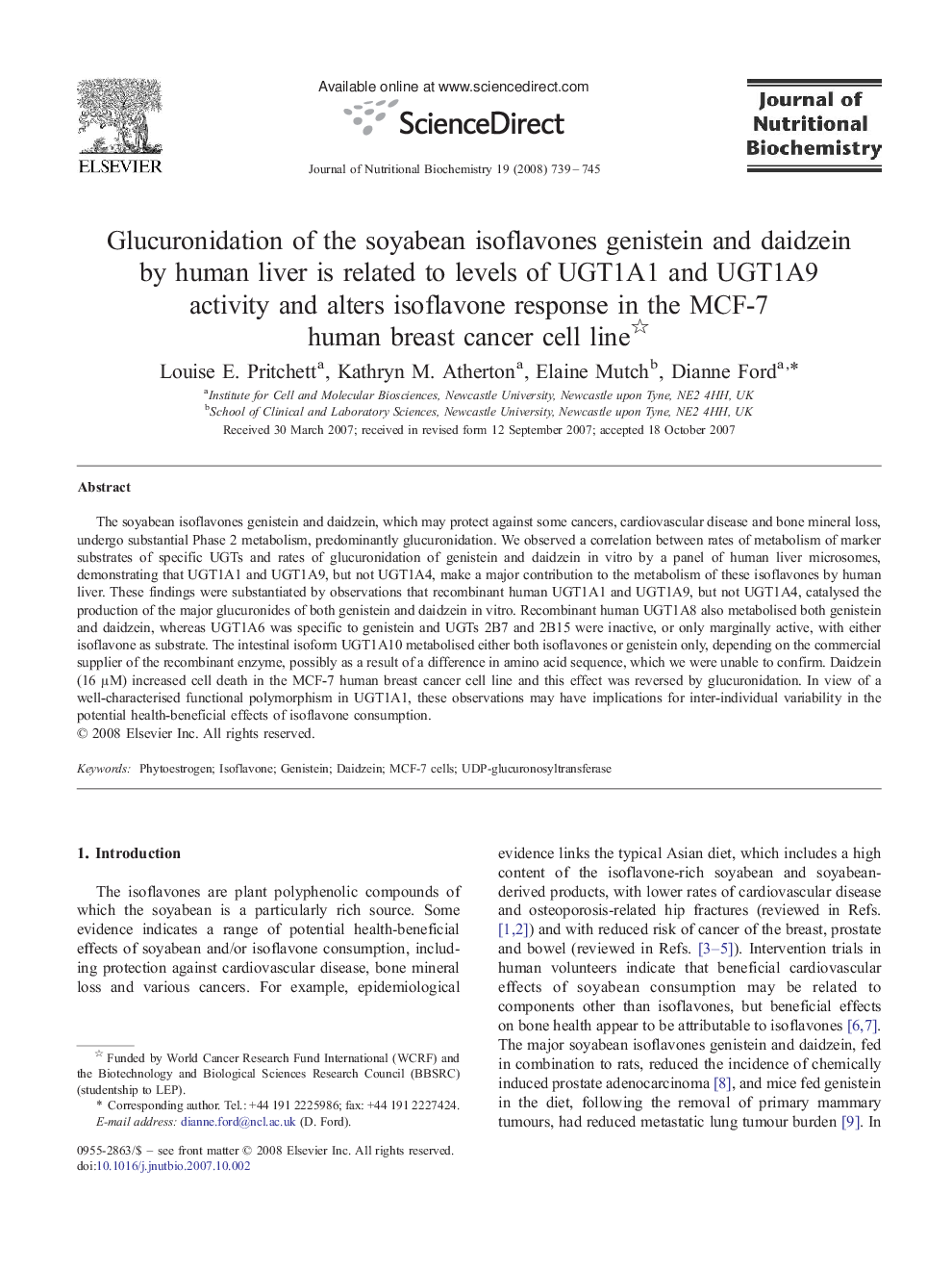| Article ID | Journal | Published Year | Pages | File Type |
|---|---|---|---|---|
| 1991107 | The Journal of Nutritional Biochemistry | 2008 | 7 Pages |
The soyabean isoflavones genistein and daidzein, which may protect against some cancers, cardiovascular disease and bone mineral loss, undergo substantial Phase 2 metabolism, predominantly glucuronidation. We observed a correlation between rates of metabolism of marker substrates of specific UGTs and rates of glucuronidation of genistein and daidzein in vitro by a panel of human liver microsomes, demonstrating that UGT1A1 and UGT1A9, but not UGT1A4, make a major contribution to the metabolism of these isoflavones by human liver. These findings were substantiated by observations that recombinant human UGT1A1 and UGT1A9, but not UGT1A4, catalysed the production of the major glucuronides of both genistein and daidzein in vitro. Recombinant human UGT1A8 also metabolised both genistein and daidzein, whereas UGT1A6 was specific to genistein and UGTs 2B7 and 2B15 were inactive, or only marginally active, with either isoflavone as substrate. The intestinal isoform UGT1A10 metabolised either both isoflavones or genistein only, depending on the commercial supplier of the recombinant enzyme, possibly as a result of a difference in amino acid sequence, which we were unable to confirm. Daidzein (16 μM) increased cell death in the MCF-7 human breast cancer cell line and this effect was reversed by glucuronidation. In view of a well-characterised functional polymorphism in UGT1A1, these observations may have implications for inter-individual variability in the potential health-beneficial effects of isoflavone consumption.
